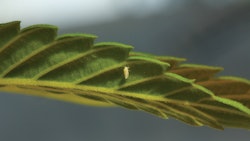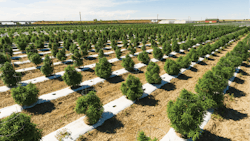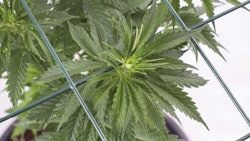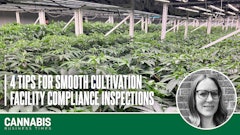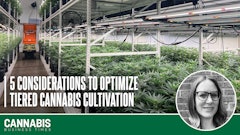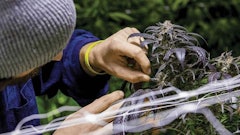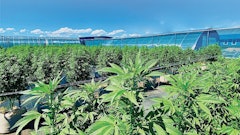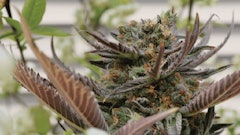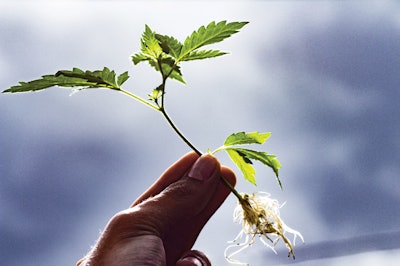
Looking at a root closely reveals thousands of tiny, fragile hairs protruding from its body. Root hairs are where nutrient and water uptake happen, so growers need to focus on taking care of them. Follow these pointers to ensure your roots are as healthy as possible, and can give you the scheduling and yields you desire.
1. Perfect a Fast Start
Consistent rooting times are essential to maintaining production schedules. Whichever of the various root-out techniques and products a grower prefers, they need to be sure cuttings are ready for transplant when needed, across all seasons, and regardless of who is working in the propagation room.
As with many aspects of commercial horticulture, how a grower chooses to establish cuttings is less important than how consistently the process delivers healthy root systems. It is also important to test products and techniques against each other to determine which combinations produce the most consistent results with the least variation.
Standard operating procedures (SOPs) document how to control critical production variables, so the propagation SOP needs to specify not only products and procedures, but also performance metrics like proportion of cuttings that make it to transplant or root mass size. Metrics provide feedback on how well the process is running, allowing growers to keep their propagation operation running smoothly and identify issues before they can impact the flow of the operation.
2. Let Them Breathe
Make sure media has adequate air space. Engineered, peat-based grow mixes are designed to deliver 15- to 25-percent porosity. If a grower mixes their own media, we recommend they submit samples to an agricultural soils lab to find out how that mix’s porosity compares to engineered materials, and whether amendments like perlite need to be added to improve porosity.
Porosity can be reduced during transplant by compacting the media. Automated filling machines deliver loosely filled containers that provide an ideal matrix for roots to expand.
3. Handle With Care
Roots are fragile, root hairs more so, and mycorrhizal networks are the most fragile of all. Each transplant is a chance for root hairs, roots, entire root masses and mycorrhizal networks to be broken. These breakages lead to reduced nutrient and water uptake that shows up in varying degrees of transplant shock on different plant parts, depending on which roots were damaged. Treat roots with kid gloves during transplant, and don’t drop, kick or squeeze containers during the growing period. The challenge is to minimize damage while maintaining process speed.
4. Monitor Root Performance
Given that the roots’ key role is to capture and deliver nutrients, uptake assessments give growers a tool to gauge the performance of any root system. With that information, growers also can assess the cost effectiveness of their root/media systems. Monitoring nutrient uptake and levels over the growing cycle gives growers an objective measurement they can use to decide what levels of key nutrients the plants demand over the growth cycle. This helps the grower pinpoint optimal nutrient levels.
Media electrical conductivity (EC) monitoring and plant tissue nutrient testing (via labs or on-site meters) make such assessments possible.
5. Keep Moisture Levels Not Too Dry (and Not Too Wet)
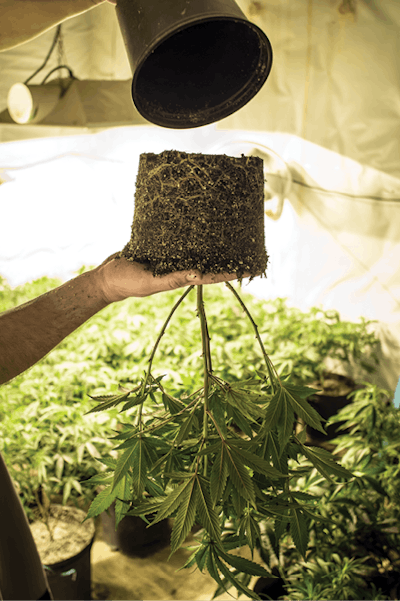
If root hairs are allowed to dry out or drown, the plant loses uptake capability, which explains why the symptoms for under-watering can be the same as over-watering.
The first rule of moisture management is to not transplant roots into dry media, which can suck moisture from the tender roots and dry them out. Dry, peat-based media has a very low pH that can harm roots if pH adjusters in the media mix are not drenched prior to use. The adjusters do not work if they aren’t dissolved in water. Soak peat-based media in water at least overnight before using so that pH can rise to the desired 5.5 to 6.5 range. This applies to any media that includes limestone or hydrated lime pH adjusters.
The practice of transplanting plants into containers of increasing size was developed to reduce watering errors, but multiple transplants come with high labor costs. Transplanting relatively small root masses into large finishing containers saves transplant labor, but the grower must carefully manage water delivery if they adopt this approach. After transplant, give only as much water as is required to moisten the transplanted root mass, and avoid wetting the rest of the media in the container. Increase the amount of water delivered as root mass grows. If that sounds tricky, it’s because it can be. We recommend against trying to achieve that control through hand-watering. Controller-based delivery systems can be programmed to implement a variable water-delivery profile during veg and transition when the root mass is growing fast.
6. Give Roots a Little Help
Root hairs are efficient at nutrient uptake, but even at that, a large proportion of plants in nature developed symbiotic relationships with soil-dwelling fungi (mycorrhizae) that add to the plant’s overall nutrient-uptake capability; this is very helpful, given that nutrients can be quite scarce in nature, according to Chapter 4 of “Plant Science”: “The Role of the Mycorrhizal Symbiosis in Nutrient Uptake of Plants and the Regulatory Mechanisms Underlying These Transport Processes,” by Heike Bu¨cking, Elliot Liepold and Prashant Ambilwade.
In container cultivation, however, nutrients are abundant, and mycorrhizae’s overall value may be reduced. A study published in the July/September 2007 issue of Acta Botanica Brasilica also found phosphorus can slow mycorrhizal colonization of roots, and high phosphorus levels are a basic element of most cannabis flowering nutrient recipes today. Media can be analyzed in labs to determine the extent of root colonization by mycorrhizae, and testing can help determine how well mycorrhizal inoculations are performing.
Ebb-and-flood (or flow) growers may not realize benefits from mycorrhizae unless roots are grown in a fine matrix, such as rockwool, that mycorrhizae can populate.
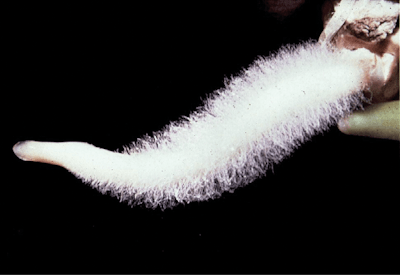
7. Stare at Your Roots
Root health is so important that we recommend growers have a way to observe their roots throughout the growth cycle. Field growers can carefully uncover roots, and container growers can cut small windows into a few containers, allowing them to monitor not only root health, but pest pressure as well. Close or cover the windows when they are not in use.
If root hairs are missing, start looking for insects/mites that could be eating them. If the roots are brown or have an unpleasant smell, start thinking about whether they are getting too much water and look to see if there might be a source of pathogens contaminating your water or media. If the roots are sparse, straggly and dark, check your nutrient runoff levels to see if the roots may have been exposed to sustained high nutrient levels (ECs above 4).
Finally, tearing apart spent root balls of under-performing plants provides feedback to guide the grower. Even after finding the sweet spot, inspect a few root balls every harvest.
8. Get Pests Before They Get You
Aphids that occupy plant roots are a serious problem for growers. And while reports exist of control using azadirachtin and pyrethrins (which are commonly allowed to be used on cannabis), these pests can still be extremely tough to eradicate, once they are present.
The most effective approaches we have seen beyond clean rooms is prevention through mechanical exclusion, including physical barriers, irritants and deployment of adhesive-based devices to prevent aphids from reaching containers either overland or by air.
We have recently seen suggestions that root aphids are phylloxera, a pest related to aphids that is the scourge of grape growers. But the different life cycles and modes of action of these two pests reminds us that the first rule in pest management is proper pest identification. So get good pictures and send them to an entomologist for a proper ID.
Diseases such as Pythium, Fusarium and Rhizoctonia often can be prevented by water-supply treatments with products containing hydrogen peroxide, but the grower needs to find where the infection originated so that disease, treatment and low yield don’t become a constant headache. Media re-use, compost teas and organic media are all going to present growers with an increased infection risk, so cleanliness is the watchword because destruction of affected plants is sadly often the only treatment for disease.
9. Understand the Nutrient and BioMass Ratio
Plants gain weight by taking up nutrient atoms and turning them into organic compounds that become biomass. The more nutrients roots take up, the more biomass (yield) will be added. Find the limits by increasing nutrient levels until the plant stops responding with more growth. After spending so much blood, sweat and tears to grow great roots, take the time to find out just how hard those tiny root hairs can be pushed.









